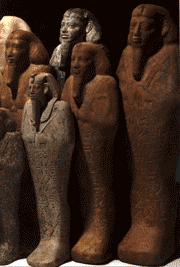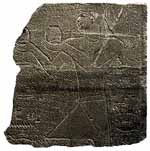KingshipNapatan and MeroiticThe Kushite statehood had survived for over a thousand years without being subjigated by Egypt, the empired that ruled Egypt (e.g. Persia and Rome), or the harassful desert nomads. This observation is noted as a strong indicator for the efficiency of the Kushite state system.
The Napatan-Meroitic era is characterized by continuity in the
ruling system.
Kush followed a specific procedure to select the particular in time pharaoh from among other royal members. The selection procedure was normally performed by high priests, who were expected to consult the Cult of Amon over the issue. The answer of Amon to the priests, as to who should be the king, was considered final. The selected pharaoh was then anointed at the temple of Amon at Napata by the high priests. Then the new pharaoh visited the main temples of Kush to get ordained and perform other religious rites related to the coronation ceremony.
According to the writings of Greek and Roman geographers, if the high priests decided that the pharaoh failed to rule according to Ma'at, they could issue an order that required the pharaoh to commit suicide. According to the second century BC Greek writer Agatharcides of Cnidus, Meroitic king Ergamenes (also known as Arkamani-qo) ordered all the high priests to be slaughtered because they sent him a letter with the order of suicide.1 Thus, unlike the Egyptian pharaohs, the Kushite pharaohs did not practice absolute power. Historical writings provide some statements on attitudes of the Kushite rulers. For example, Herodotus, in the fourth century BC, wrote the following about the rule of the Kushite pharaoh Sabaco in Egypt:
Edited: Dec. 2008. |

